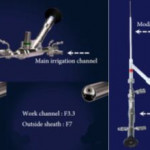Editorial: RC & VTE – Are We Doing Enough?
Using a large comprehensive population-based cohort from Canada, Doiron et al. [1] present an in-depth analysis of risk factors and timing of venous thromboembolism (VTE) after radical cystectomy (RC) for bladder cancer. This report reiterates what is already known, which is that VTE after RC occurs at a non-negligible rate (5.4%) and most VTEs occur after hospital discharge (55%). VTE is an established complication in patients undergoing major oncological surgery, with some guidelines recommending 4 weeks of VTE prophylaxis after major pelvic surgery. This significant incidence of VTE after discharge highlights the potential impact of extended VTE prophylaxis for up to 28 days. Level I evidence for such practice was published more than a decade ago [2]. Yet, the uptake of these data remains low, at least in urological oncology. A recent survey-based study of pelvic cancer centres from the UK showed that only two-thirds of centres use post-discharge prophylaxis [3]. Using highly granular data, Doiron et al. [1] provide a detailed timeline of VTE occurrence after RC. They found that among patients who were diagnosed with VTE after discharge, >60% of these events occurred at ≤4 weeks of discharge. Unfortunately, there were no data on whether VTE prophylaxis was used in the study population.
The authors identified greater surgeon volume and increased length of hospital stay as risk factors for postoperative VTE, while accounting for important disease-related covariates. As mentioned by the authors, surgeon volume is most likely a surrogate for another unmeasured confounder. Higher volume surgeons, who often practice in large/academic institutions, may have increased case complexity with patients at higher risk for VTE. Additionally, such institutions may be more prone to perform diagnostic testing in high-risk patients and identify VTEs that would have otherwise gone unnoticed. A report from France found that the rate of VTE after RC was 24% in a cohort of patients who all underwent complete lower limb ultrasound, yet the vast majority (92%) were asymptomatic [4]. In other words, if you are looking for a VTE, you are more likely to find one. However, the clinical relevance of these VTEs remains unclear.
As shown from prior studies, length of stay was also found to be a risk factor for VTEs. Why does an increase in length of stay lead to a higher rate of VTE? One explanation is that patients who stay in the hospital longer are more likely to be immobilised for longer. This may explain why patients undergoing RC have higher rates of VTE than those undergoing other urological oncology procedures. However, immobilisation is a difficult variable to define or to measure. If longer immobilisation leads to increased VTE incidence, recently implemented enhanced recovery after surgery (ERAS) protocols that lead to earlier mobilisation would be expected to be associated with fewer VTEs. It is important to mention that other previously associated factors with VTE, including operative time and body mass index, which may be related to immobilisation time are not recorded in this study.
The use of neoadjuvant chemotherapy (NACT) for muscle-invasive bladder cancer has been shown to improve overall survival and is being increasingly used in RC patients. This study examined NACT as a risk factor but did not find an association. Notably, they were limited by the few patients who had received NACT. The use of chemotherapy in patients with cancer is a well-recognised risk factor for VTE [5]. It will be important in the future to continue to examine the incidence of VTE in NACT patients as this population grows.
Taken together, patients undergoing major cancer surgery have a significant risk of postoperative VTE, with evidence showing that rates of VTE are increasing over time [6]. Although guidelines for VTE prophylaxis are not uniform, this study’s findings [1] that most VTEs occur after discharge is a reason for urological surgeons to strongly consider extended VTE prophylaxis in this high-risk population.



